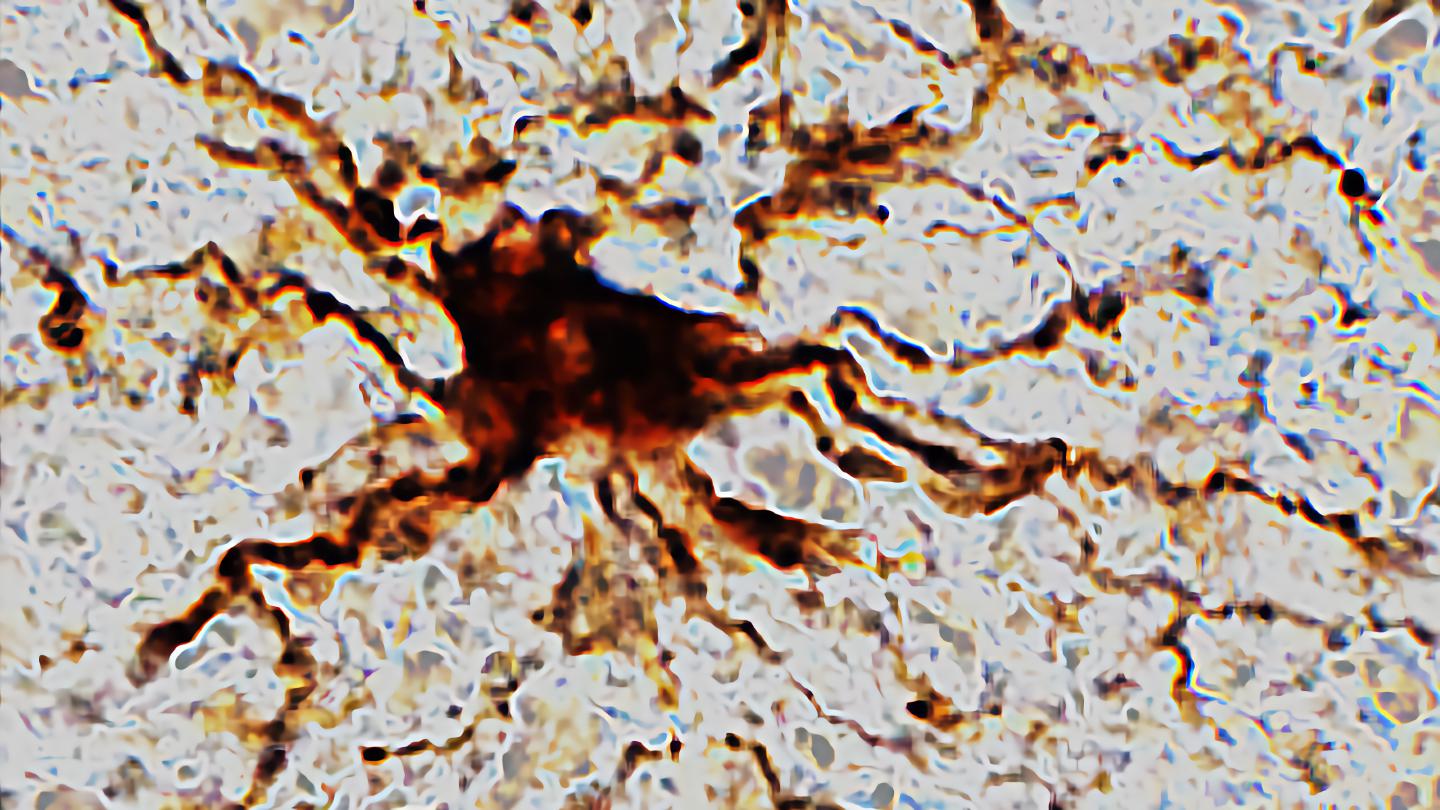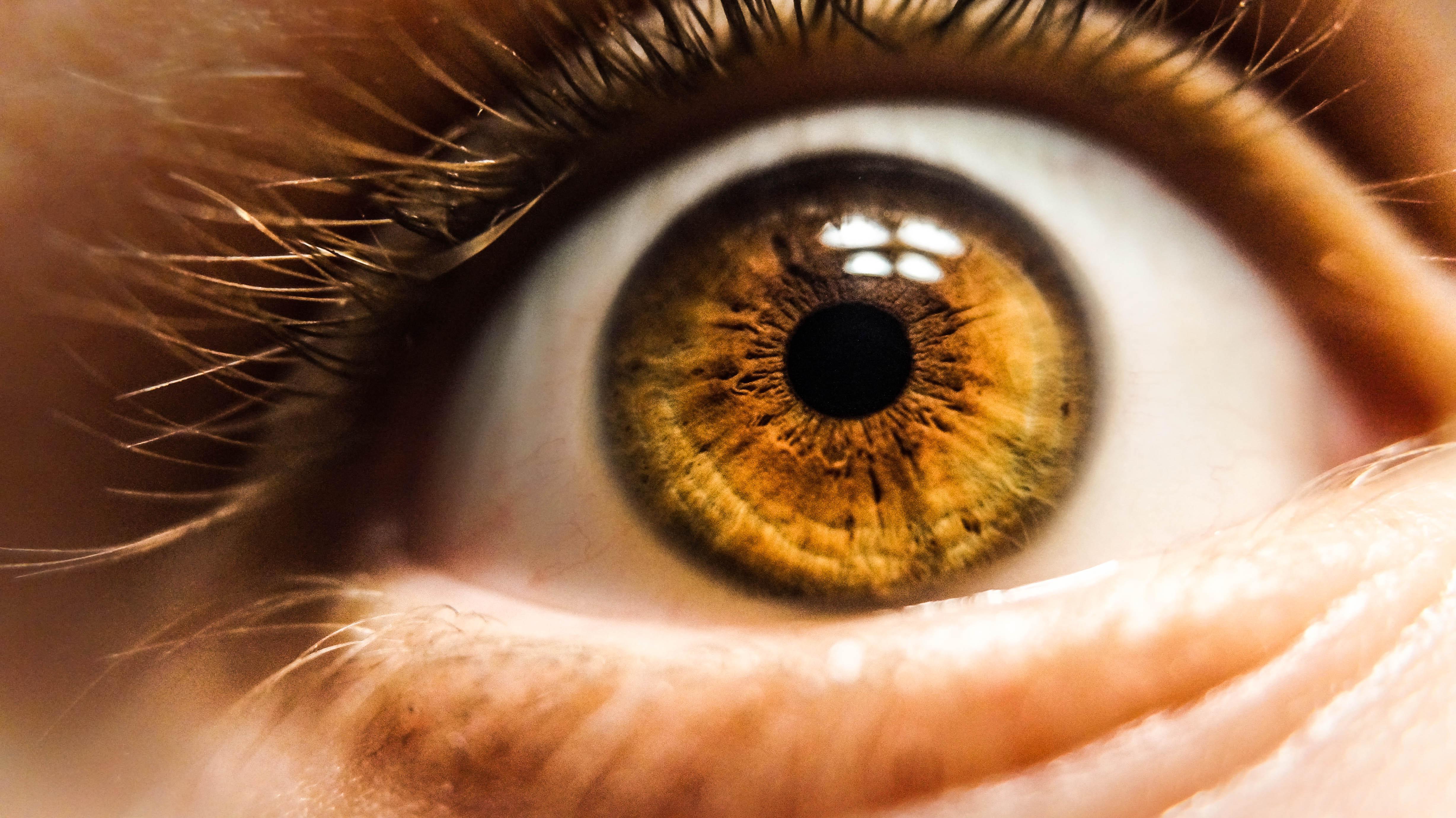The mystery of how “place cells” in the brain map out your physical environment

- In his book, Dark and Magical Places: The Neuroscience of Navigation, molecular biologist Christopher Kemp explores how the brain generates highly detailed maps of the physical spaces around us.
- Key to the process are “place cells,” which are located in the hippocampus.
- In this excerpt of the book, Kemp overviews the role of place cells and how this relatively sparse group of cells accomplishes such impressive tasks.
Excerpted from DARK AND MAGICAL PLACES: The Neuroscience of Navigation. Copyright (c) 2022 by Christopher Kemp. Used with permission of the publisher, W. W. Norton & Company, Inc. All rights reserved.
As a postdoctoral research fellow at University College London in the 1970s, John O’Keefe was interested in the hippocampus and its role in memory—like everyone else. Around that time, researchers had found a novel way to record the electrical activity of single neurons, by implanting a tiny recording electrode into the brain of a freely moving rat. When neurons are active, they generate a distinctive electrical signal—a spike known as an action potential—that can be measured if the electrode is near enough to detect it.
Working this way, O’Keefe believed he would gain important insights into memory. “I was going to go and see what memories looked like,” he recalled, in a 2014 lecture at SUNY.
But that’s not what happened at all. When O’Keefe positioned his recording electrode in the hippocampus and began to monitor the telltale spike patterns of neuronal activity, he detected two distinct populations of cells. One of them was predictable, firing in a regular and slowly rhythmic wave pattern, known as theta activity. But the second cell type was different. Most of the time, the second population of cells was conspicuously silent. They did nothing. But occasionally, one of them would burst into sudden activity, ramping up its firing rate into a noisy storm of electrical impulses—a steep mountain range of spike patterns. At first, O’Keefe didn’t know why.
In 2014, he wrote: “[I]t was only on a particular day when we were recording from a very clear well isolated cell with a clear correlate that it dawned on me that these cells weren’t particularly interested in what the animal was doing or why it was doing it but rather they were interested in where it was in the environment at the time.” When the rat reached a certain location in the environment—for instance, the northwest corner of a large open enclosure—the cell fired: click. Elsewhere, it fell silent. When the rat returned to the location the cell had fired in before—click—it fired again. A cell that was active in the northwest corner of the box would fire in that location but nowhere else. As the animal explored its enclosure and O’Keefe watched the activity of the neurons, he realized: “The cells were coding for the animal’s location!”
O’Keefe named them place cells.
•
Found almost exclusively in the hippocampus, place cells are a type of neuron known as a pyramidal cell, first described more than a century ago by the Spanish neuroscientist Santiago Ramón y Cajal. During his long career, Cajal rendered hundreds of finely detailed neuroanatomical images of different brain structures, showing their microscopic structure in exquisite detail. He was awarded the Nobel Prize in 1906 for his work. He made several important discoveries and brought the architecture of the brain to the page.
One of Cajal’s intricate ink and pencil drawings from 1896 shows pyramidal cells from a rabbit cerebral cortex. They look like uprooted trees from a strange grey forest, their root structures floating above ground. A long, straight axon extends from a pyramid-shaped cell body before branching and bifurcating into a thick arbor of dendrites at each end, sharing local connections with thousands of other neurons both that inform it and that it informs. Pyramidal cells are found widely in the cerebral cortex, and in the amygdala, but they only seem to encode spatial location in the hippocampus, or nearby. To complicate matters, a few years after the initial discovery of place cells, O’Keefe described misplace cells. If an animal travels to a location in its environment expecting to find something that is absent instead, the misplace cell begins to fire.
O’Keefe showed that when the rat is at rest, a place cell fires once every ten seconds or so. But, when activated, it begins to signal much more quickly, a flurry of action potentials arriving at a rate of around twenty times a second or faster. These impulses act like a locating beacon, a cursor, a pin in a map. The precise location that a place cell fires is known as its place field or firing field. Imagine, for instance, that you are standing at your front door: a place cell activates. But as you step into your house and begin to walk down your hallway, that particular place cell stops firing. It quietens. It belongs to that single place only—to the front door. As you begin to move through your house, a procession of other place cells begin to fire in turn, one after another, from room to room, before falling silent again. The activity of each cell indicates a distinct location in your house. Cell #008: the kitchen sink; Cell #192: your favorite reading chair; Cell #417: the window in your bedroom that overlooks the street. And so on. In this way, place cells are endlessly mapping your entire spatial environment one location at a time.
But how do they do it?
“In the most straightforward sense,” says Lynn Nadel, who coauthored The Hippocampus as a Cognitive Map with O’Keefe in 1978, “a place cell is a neuron typically in the hippocampus, although things like them are found elsewhere, whose activity is somehow modulated by, or caused by, or related to, where the animal is located in its environment.” But that’s not all it does, he says. In the same way that the definition of a cognitive map is being carefully revised, researchers have begun to ask whether place cells might have a broader role too. “Is it really what we think it is when we call it a place cell?” asks Nadel. “It actually may be something a good deal more interesting. People are beginning to talk about them not as place cells but as engram cells, or concept cells.” The debate about precisely how to define and think about place cells is likely to continue until neuroscientists reach a consensus—and perhaps they never will. For his part, Nadel thinks place cells are one component of a larger neural network. “They don’t sit there all by themselves holding up a flag telling the animal: you’re here,” he says. “They’re part of a broader network of cells that’s really dealing with the sequences of actions that the animal is taking, and where those lead the animal, and what to expect when you get there.”
When O’Keefe and Nadel published The Hippocampus as a Cognitive Map, it was a neuroscientific, philosophical, and technical manifesto. It was a game changer. Somehow, it was both lyrical and erudite. With it, an entire field of neuroscience was born. It began: “Space plays a role in all our behaviour. We live in it, move through it, explore it, defend it. We find it easy enough to point to bits of it: the room, the mantle of the heavens, the gap between two fingers, the place left behind when the piano finally gets moved.”
From that simple and whimsical beginning, they then made a leap, asking a series of questions that, like Buddhist koans, leave my brain tied in a knot: Can objects exist without space? Can space exist without objects? If the space between two objects is actually filled with tiny particles, is it still space? Does space even exist, or is it an invention, a human construct—a figment of our imaginations? If we invented space, how did we do it?
These were the mind-bending and existential questions that began the search for place cells.
In 2014, O’Keefe was awarded a Nobel Prize for his work on the complex neural circuitry that controls navigation. He shared it with two Norwegian researchers for their later work on other cells that encode space. Now white-haired and past eighty, with his chinstrap beard intact, O’Keefe is still at it, working in the same lab fifty years later at University College London. O’Keefe and Nadel had graduated together from McGill University in Montreal in the late 1960s: “An Irish kid from the Bronx and a Jewish kid from Queens,” as Nadel put it in a 2014 interview. Now they were in London together, working on the internal navigation system. Nadel had left his postdoctoral fellowship in Prague in August 1968, when Soviet tanks rolled through the cobblestone streets of the medieval city. Loading his then-wife and two kids into a van, he drove to O’Keefe, already in swinging London. They were the upstart Americans.
“We weren’t looking for this particular form of activity,” Nadel tells me. “When you first stick electrodes in the brain of an animal and you record under conditions no one’s ever recorded before, you don’t know what the hell you’re going to see.”
In the lab, O’Keefe and Nadel had rigged their recording apparatus to produce a sound every time a place cell near the electrode began to fire. Back then, data were recorded onto magnetic tapes and analyzed later. The location-specific firing patterns had taken them by surprise.
“The first time we heard it,” says Nadel, “it was like: What the hell was that?”
•
When I call André Fenton on his cell phone, he has just stepped from a mid-morning train into the cool, cavernous, high-ceilinged bustle of Union Station in Washington, DC. The noise of other commuters is a steady tidal rush around him. A neurobiologist at New York University’s Center for Neural Science, Fenton (7 out of 10) studies the storage and coordination of memory in the human brain. “I happen to be very interested in knowledge,” he says into a wall of white noise, “where it comes from, how we get it, how we make it, whether it corresponds to things that are actually real, and so on.”
Since place cells store a particular kind of knowledge—spatial knowledge—Fenton is interested in them too, along with the neural systems they help form. “The cool thing about the navigation system,” he says, “is that it’s a whole system of knowledge that we all get and we all use. We can prove that we have it by using it. I just got off the train at Union Station in Washington, and it wasn’t random that I got here.”
But to Fenton and many others, place cells still represent an unsolved riddle. “By where they discharge action potentials they seem to signal locations in space,” he says. “Now, what’s interesting in particular about what I just said is if you take another step back and say, ‘Well, how would they know where their location in space is, to signal it?’ ”
It might be tempting to think that place cells are like the cells that make up other sensory organs, like our eyes and ears. But they’re not. They’re different in important ways. Consider the eye: the retina at the back of the eyeball acts as a sensor for light. Visual information is gathered when light falls on the specialized cells there and is transmitted via neural pathways to the brain, where we can begin to make sense of it. The visual cortex then orders the sensory information gathered by our eyes. It edits and interprets that information for us. Sight is complicated enough, but at least it begins with input from the physical world: light.
Light is tangible. “You can trace it to the real world, at least in principle,” says Fenton. “The cool thing about place cells is: you can’t. We explicitly don’t have a sensor for locations in space, yet these cells seem to know something about locations in space.” Place cells remain a mystery. Fifty years since they were named, we still don’t fully understand them. Almost all of what we do know has come from animals in a box, or a maze, or running along a track. Place cells are supple navigators. They allow us to map any location on the planet. They are powerful beyond measure. When humans finally travel to Mars, says Fenton, our place cells will allow us to navigate there too. They map the entire universe. They even allow us to explore imaginary and virtual places—locations that don’t exist at all. “You probably understand Hogwarts,” says Fenton, “and it doesn’t exist.” In rats, place cells continue to build a cognitive map even when the animal is in darkness. The place cells even fire in a location-specific way if a rat is fitted with a miniature blindfold—a fact that is as ridiculous as it is informative.
How can place cells do this? Fenton says there are relatively few of them. How can they compute and encode an infinitely large universe, and even encode location for nonexistent and imagined places? In fact, Fenton explains, it takes more than a single place cell to signal a location. Many more. A rat exploring a small open enclosure might need only a handful of place cells to encode its location, but in a larger and more complex environment, more place cells are needed. This is where the numbers are important.
Fenton says: “One way of thinking about this is, there are, let’s say, in the order of a million cells in your, or a mouse’s or a rat’s brain in the hippocampal system, and there are different parts of that system.” In each part of the system, says Fenton, there are a couple of hundred thousand place cells, and approximately ten percent of them are active at any moment in time. As an individual moves around an environment, a different ten percent of place cells becomes active, firing to represent a specific location in space. “They don’t become active in a simple way, like on a checkerboard—first this set, and then a completely different set one step over,” says Fenton. “It’s a continuous representation. There are ten-thousand-ish place cells firing at any one moment. At every place in the universe a unique ten thousand cells will be firing.”
In other words, the place cell that fires, bursting into activity when I stand at my kitchen sink—Cell #008—is unique. But it has an estimated 9,999 or so comrades simultaneously firing with it, scattered throughout the hippocampal system and possibly beyond its borders too. When I sit in my favorite reading chair, another 10,000 place cells fire—a totally different combination of cells that encode my position. Perhaps some of my place cells fire in both locations. But others don’t.
It’s the specific combination of place cells firing in concert that represents a place. This organizing principle is called an ensemble code, since it requires a discrete and unique ensemble of place cells firing together at once in an orchestrated event—a synchronized burst—to encode a single location. The computing power of a system like this is incredible. And bewildering. If there’s a pattern to the way that place cells fire together—to what determines a specific ensemble—scientists haven’t found it yet. There’s no topographical relationship between two place cells. In other words, two place cells that sit next to each other in the hippocampus are as likely to represent two distant locations in an environment as they are two locations that are near to each other. They might both fire in the same location, as part of an ensemble. Or they might not.
“Just like you can compute, with an alphabet of twenty-six letters, a very, very large number of words,” says Fenton, “you can compute, with a small number of these cells, or a relatively small number—a few hundred thousand—virtually an infinite number of possibilities of location.”
Computational neuroscientists have a name for the principle by which a relatively small population of cells—for instance a few hundred thousand place cells in the hippocampus—fire together to encode something vast and infinite, like the physical universe. It’s known as sparse coding.
If Fenton wants to learn something about place cells and how they encode our position in space, he must first insert a recording electrode into a brain to monitor the electrical activity of place cells. It’s the same technique that O’Keefe was using in 1970. Usually, researchers use rats or mice for this work. Almost exclusively, they aim the electrode at the rat’s hippocampus, the brain region where place cells are particularly abundant. This isn’t an easy thing to do. Gradually, though, over the past few decades, neuroscientists have become very good at it.
For more than a decade, researchers have been using use tetrodes, each of which has four separate electrodes on it. This way, they can record the firing activity of several different neurons at a time, the way a microphone dropped into a cluster of people can record several threads of conversation at the same time instead of just a single voice. Even so, because place cells are scattered throughout the hippocampus, Fenton can only monitor a few of them at the same time—perhaps as few as ten in one animal, he says. If he’s lucky, his electrodes might sit close enough to as many as sixty place cells at once. He can watch them firing together in real time as the rat moves around. But since there are a few hundred thousand place cells in the hippocampus, and a few scattered beyond its borders too, if it takes the sudden synchronized firing of an ensemble of around 10,000 of them to encode a specific location, as Fenton suspects, even the best study provides an incomplete picture. It’s a little like studying the dynamics of a rioting crowd by tracing the movements of a handful of people in it. Or piecing together a conversation between 10,000 people by listening to just fifty voices.





